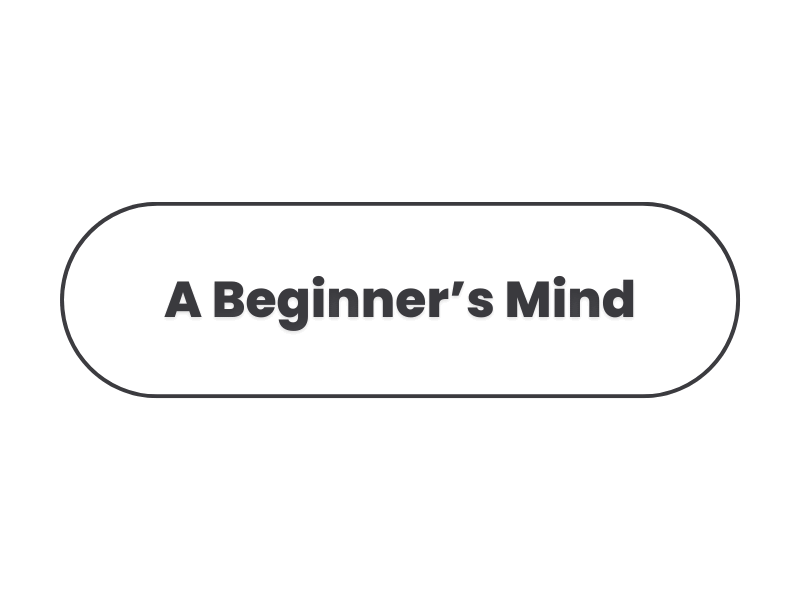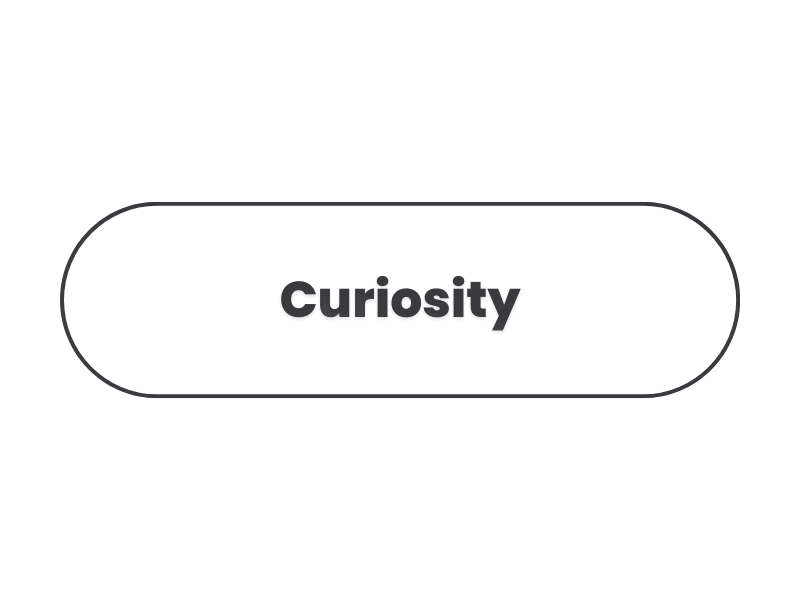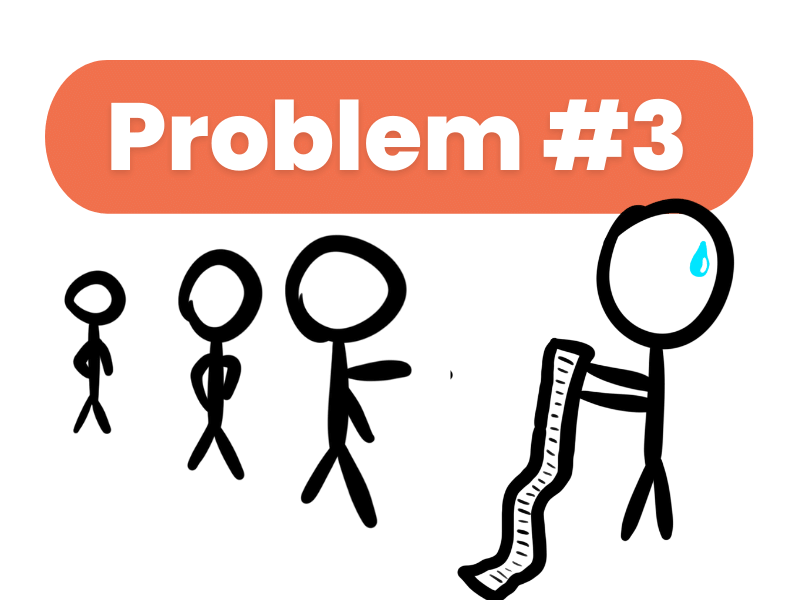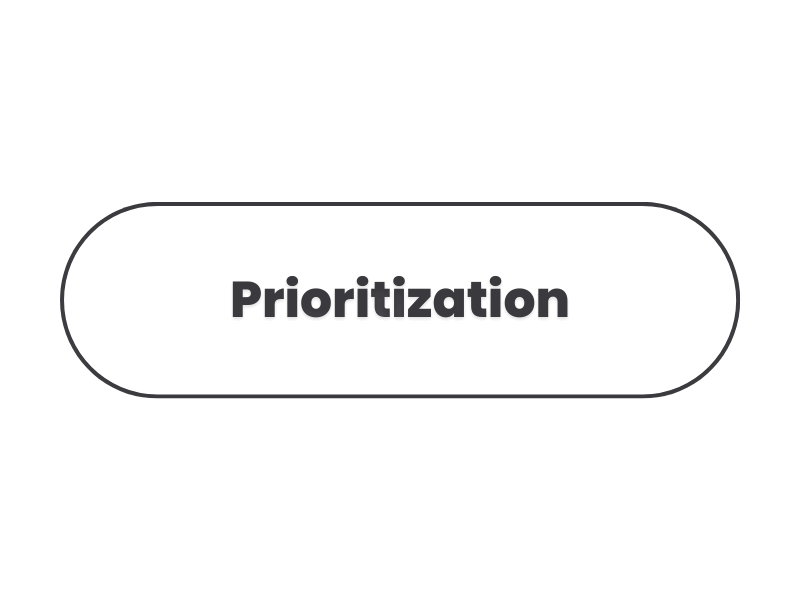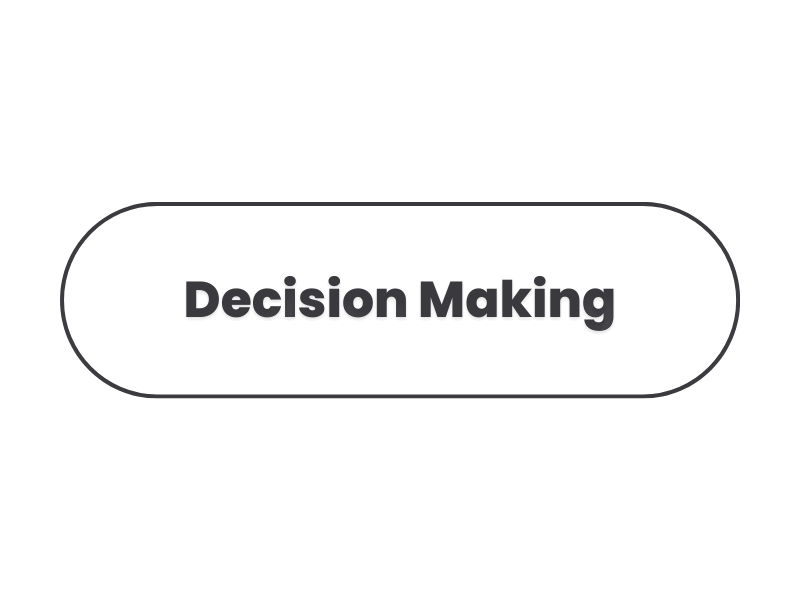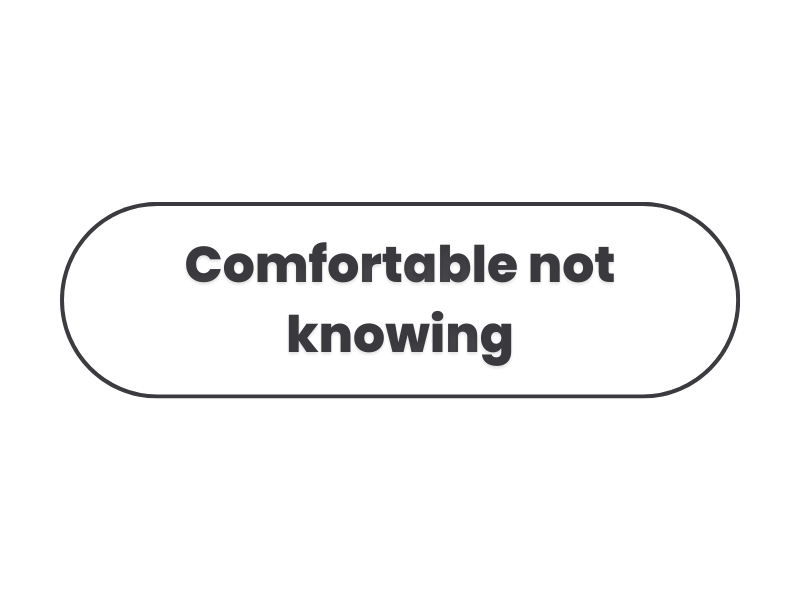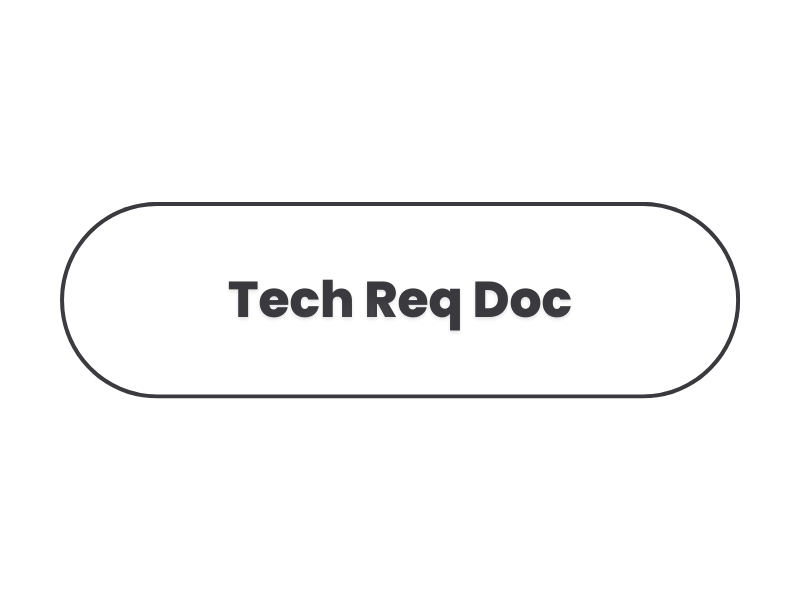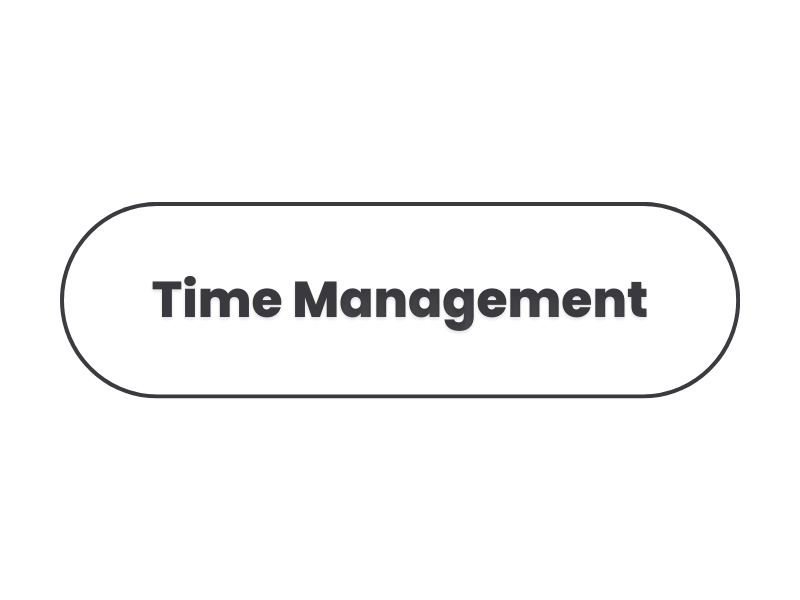21 skills you need to solve problems as a Product Manager
You have probably seen countless videos and articles going over the skills you need to be a good product manager, and while those all provide value, I noticed something missing from each of these lists.
What’s missing?
The specific problems that you encounter in your day-to-day life as a PdM.
Each list provides a competent list of skills but rarely do they present them as solutions to the specific situations in your daily life as a Product manager
Today I want to do something different.
Enter Nawal Behih, Nawal is the Product Manager at Attuned.ai, a SaaS platform that aids in motivating and retaining high-performing teams, and she has been through it all as a Product Manager.
I asked her to provide 5 problems that she encounters as a Product Manager and the skills she uses to solve each.
Guess the skill.
As we go through each situation, I want you to take a moment to consider what skills you think you would need.
For simplicity’s sake, I have not repeated individual skills, but in reality, you will need to use a mix of all of these in many situations.
There is a lot to cover, so let’s get started.
Your designer knows more about your users than you
This is not good, but if you are just starting, and the designer has been there for some time, this could be the case.
This is extreme and it is not a competition between you and your designer. What I really want to illustrate here is the importance of knowing your user.
As Nawal put it “you don't think of the product as a Product Manager, you think of the user” or “Don’t think like a Product Manager, think as a user”
As a PdM you will think speak breathe like your customer, it is your job to make the decisions that the users will benefit from the most. You will guide the product in a direction that will heighten the useability of your product.
So what skills do you need to build your user knowledge?
PdM Skill: Empathy
If you take away one thing from this list it needs to be Empathy.
Empathy is at the core of so much of the modern workplace making it a vital skill for your career.
This is heightened as a PdM due to the variety of people you need to empathize with including your users, your development team, the sales team, the customer success team, the marketing, the C-Suite, and every other stakeholder.
The most important of these is of course the user. You need to constantly be thinking about each moment of the user’s experience, what drives them, the problems your product can solve, and how you can improve their overall engagement.
Here are some tools that can help you get a view of your user’s perspective.
Tools to help understand your customer
Create personas - a persona is a fictional character that represents a specific type of user or customer for a product or service. Read more about personas here
Create Empathy maps - a tool to organize insights gathered from user research into four quadrants "Think and Feel", "See", "Hear" and "Say and Do"
Interviews - create a list of questions that will provide the insights you need to ensure you are creating a product that will benefit the users. I will go into greater detail in the section on listening.
You should be involved in creating each of these to ensure that you are familiar with how they are created and the perspective used when creating them.
A key component of this comes from Design Thinking, and it is the next skill you need.
PdM Skill: A Beginner’s Mind
Often the process of becoming an expert is a process of pruning or removing possibilities through experience and our assumptions based on those experiences. Well, I am telling you to forget all of that pruning and embrace a beginner's mind.
As a Product Manager, you need to drop all the assumptions and knowledge you have about the product, the market, the competition, and what you “know” about the product. Once you have released all of these preconceptions you focus purely on what the customer is saying.
You may think you know your product or what the users will want, but if they are not telling you then you cannot be sure.
So take a beginner’s mindset and open your brain to the possibilities that the users are giving you.
This principle comes from DESIGN THINKING, read more about it here.
The next skill is vital for every product manager.
PdM Skill: Listening
You have to be a good listener if you want to be a good Product Manager.
When you are sitting with a customer, you should not be talking. You often have a minimum amount of time and you need to get the maximum amount of information, so just stay quiet.
Limit yourself to 3 questions, make sure they are not based on any assumptions, and make sure that you are not leaning the user to the answer you want, or any answer for that matter.
Here are a few example questions that you can use in your user interviews.
Example questions:
Why did you login?
What problem did you have in mind?
What triggered you to think of the product?
What would you like to change?
What frustrated you?
How do you see the product solving your problems?
Follow with questions like “why would you want that?” Or “why would need that?”
When you are asking these things you are trying to get to the problem. Interviewing users is about finding the problem that is coming from each specific case, then finding a solution that can work for all users.
So be a good listener and find out what your users really need.
Your internal teams do not trust you
As a product manager, your job requires a lot of back and forth; you're constantly being stretched thin which will lead to people thinking that you don't care about their opinions because you won't have the time to constantly be checking in with them
It can be difficult for you to build trust when you are only focusing on the product before the people you work with.
It's not just whoever you report to, this can happen with your dev team, the tech team, the sales team, or any other team that feels they have a stake in the success of the product.
This is obviously a problem because everyone has to believe in the product vision and they need to trust that you are making decisions that will lead to the long-term success of the product.
Additionally, you will need them to contribute feedback as often they are the people who will have the most direct contact with the users.
So what skills can help you remedy this situation?
PdM Skill: Communication
Just like in every job where you have co-workers, Communication is vital. Internally you have to effectively communicate goals and skills, explain why and how, and get everyone to buy into your plan.
This requires you to be psychic. I meant it. You need to know what the person you are talking to is thinking about. This sounds far-fetched, but it’s easy, let me explain why.
Every person in the company will have their own set of goals that they are trying to achieve and once you figure those out, you will be able to predict what they will be thinking about and the best ways to present your ideas to them.
Here are a few examples:
Customer Success - their job is to ensure that existing customers are getting the most benefit from the product, so they will be thinking about how they will introduce this feature to existing customers and what the reaction will be from the customers they are working with.
Sales - the role of sales is to bring in new customers, which is why sales will be thinking about how they will pitch this feature to potential customers and whether or not those customers will be excited about such a feature.
Dev Team - the development teams have to actually build the product, what do you think they will be thinking about? That’s right, how they will build this feature that you are proposing, and what is the time cost associated with that.
C-Suite - The C-Suite needs to make sure the product has business value, thus they will be thinking about the value that this feature can bring to the business and how this will mesh with the product plan for the next 10 years.
See, once you understand where each of these teams is coming from you can understand the best ways to communicate your ideas, simply highlight what your feature idea will do for them.
Now go out and read some minds with your new psychic abilities.
PdM Skill: Curiosity
Curiosity is a broad skill, and I have seen it called “a love of learning”, or “a passion for progress” and both are accurate ways of looking at this skill.
Of course, You need to be constantly open to learning more about the customer, but you also should be trying to understand more about what adjacent teams are working on in very specific terms.
This will not only give you great insight into how the company is functioning as a whole, but also the part of the product that you can optimize to help each team.
As an example, here are a few places to start showing curiosity:
What parts of the product have sales been seeing the most interest in?
What parts of the onboarding are slowing down the Customer Success team?
In the CEO’s hunt for investors, what has drawn the most interest?
Beyond the practical improvements of the product you can make, this interest in people’s work struggles will show them that you care about them and create a cohesive feeling across the company.
PdM Skill: Coding
As a Product Manager, you don't need to have coding skills, but if you have them you can have deeper conversations, with your designers and your development teams, providing a strong foundation on which trust can be built.
Any coding language is fine, the key components to understand are the way you write the code to tweak and change.
There are going to be lots of discussions about back-end architecture and structure, which is why the more you know about coding the easier the conversation will be for you. If you do not have those basics, you run the risk of being completely left out of those conversations.
PdM Skill: Understanding of UI/UX
As with coding, the more understanding you have about human-centered design the better.
When you know the foundation of UX it is easier to scope out a feature without your design team. This way, when you want to talk about a feature you can visualize it with your designer, eliminating a good portion of the time drag that it would otherwise take to design the feature.
If you do not have this basis, it limits the creative discussions you are able to have with the design team.
Beyond the conversations with the designer, you can discuss the whole feature with sales, customer success, or any other team and conceptualize it in a way that is easy for you to take to the design team, cutting down on repeat conversations.
People keep coming to you with new feature requests
As I alluded to in the previous step, there are many times when stakeholders internally will feel that they have a very specific feature or request that they know users will love.
This often comes as a result of their own thought processes and is not necessarily based on any sort of research that they've executed.
Your CEO will say “we need to add X feature that a competitor is adding”, where your customer success team will mention that a customer has a feature request, and your sales team has already promised to deliver a feature to a new customer.
It's your job as the Product Manager to decide what the dev team will create so how do make that decision?
PdM Skill: Prioritization
At the beginning of this list, I said “if you take one thing away from this article it should be empathy,” On second thought, it should be prioritization.
This is an example of why you need prioritization skills. If I had prioritized this list better, more people would have known that prioritization is the most important skill. I guess that is why I am not a product manager.
You need to be able to recognize if each request is something that needs to be done right away.
Here are some examples of how to evaluate the urgency of the request:
Is this something affecting our users?
Is this a single-use case or a long-term benefit?
Is this affecting our ROI?
Will this lead to a deal being closed? How important is this deal?
Is this affecting the primary user of the product directly?
Is this problem that is affecting the primary user’s day-to-day job?
How big of a frustration is this for the end user?
How many users or customers are affected by the problem this request is trying to solve?
Does the outcome of the request align with the business goals and values?
When Nawal is assessing prioritization, she knows that anything affecting the main user, anything affecting their experience, that is the priority, the other factors come into it after the user’s perspective has been taken into account.
In order to effectively prioritize, it is crucial to implement a prioritization strategy. If your company doesn't have one when you join, this should be the first thing you do.
Building a "prioritization strategy"
Define the success metrics
Define the business goals
Understand the data you have
Measure and improve retention metrics
Define who is the targeted end user
Depending on what your focus is right now, the prioritization strategy will switch,
If you are focusing on the frequency of login, retention, Daily active users, or new user acquisition, it will be a different perspective. Knowing which metrics define success will help you refine your prioritization strategy,
PdM Skill: picking your battles
This is a skill that you can use in everyday life as well as in product management life. Knowing how to choose what hill you will die on is critical for building long-term relationships.
In the context of Product Management, this comes into play heavily due to the cross-functional nature of the role.
Every team that is making a request will have its own process and ways of doing things and you need to understand the appropriate times to disrupt these. Alternatively, you need to understand if these processes have already been validated and read the room on how people will respond to your challenging the status quo.
I like to think of this as emotional prioritization.
Here are a few things to consider when trying to pick your battles:
How will saying ‘yes’ affect your relationship with this team member?
How will challenging their perspective affect your relationship?
Knowing the time and resource limits of your dev team, is it worth damaging their trust in you by accepting a new feature request?
I am not telling you to always say yes or no, but to be mindful of how the yes or no will impact not only the product but also your internal relationships across all teams.
PdM Skill: Courage
Being a Product Manager means having to say no. You will be bombarded with new features or product requests and you need the courage to respond in the negative.
Saying ‘no’ to management
This can be scary. But remember, You know the product and the user better than anyone else. Often people telling you ‘how the product should be’ and ‘how you should react are way off’. We all have our own set of biases that need to be overcome, so until the ideas are validated with data, nothing can be taken at face value.
Many of your conversations with people will include ideas for a feature that are stemming from somewhere other than the user, therefore you have to push back, you have to say no, but most importantly you need the idea to pass the validation test.
When a new request comes in look back to your prioritization strategy and see if it fits.
Here is an example of a quick priority check:
Is this affecting the user directly?
Is this impacting someone’s day-to-day job?
Can it cut down their time spent?
If the answer is ‘no’ to these questions that means that the priority check did not match the prioritization strategy and the feature is not urgent enough to warrant your team's time.
On top of this, You need to be an advocate for your dev team and you need to be the filter by being the point of contact. If each new request reaches them it adds up to a lot of noise. Taking initiative and having the courage to make decisions will bring your team closer to success in the long run. You can't wait for someone to come and tell you what to do. If there's a problem, you cannot wait until someone else resolves it. Be courageous!
PdM Skill: Critical Thinking
This skill is table stakes for any modern role and critical thinking will apply to different aspects of your day to day.
You will need to critically assess and evaluate decisions to add or remove a feature.
There will be times when a problem comes in and you need to be thinking big picture. Examine how will this be impacting at a small scale and how will this impact things on a big scale.
Think critically about what process is available to address both use cases.
There is not much to add here, get good at thinking!
PdM Skill: Decision Making
Again, this is a basic skill, but that means it should not be overlooked.
You won't know all the answers and you won't always have the data, so you will have to make decisions based on the best of what you know.
Decision making takes practice and will get easier with experience.
This ties into the first skill in the next section about being comfortable not knowing.
You want to implement a feature
As a Product Manager, you have great insight into what the users are asking for. Plus, It is your job to enhance the experience for each user.
This means you need to constantly be innovating and validating ideas for new features.
Even if you only choose the ideas that pass your prioritization checks, not all of them can get made, so how do you know that your feature idea is actually going to benefit the user?
PdM Skill: market research
Market research is an important skill for understanding what trends are on the horizon that you need to start developing for today.
It also guides how you will build your product to differentiate it from what is already available on the market today.
Market research can be in the form of interviews with your target users, staying up to date with competitors, or third-party market research vendors.
Here is a great article from Product camp that dives into strategies for market research.
The next skill has appeared in almost every skill set article I have written.
PdM Skill: Data
Data is a modern skill set that comes up in almost every field. As a Product Manager, every decision you make regarding the product should be based on data. That is why you need to have both strong quantitative and qualitative analysis skills.
You need to know how to define what data you are important, then compile, organize, clean, and present that data to validate a feature idea or reject it.
Converting data to action
Data should be a factor in every decision made, looking for the clues and patterns in the data will let you be on top of your game. It will reveal where there is an opportunity.
Here is what ChatGPT has to day about leveraging data as a Product Manager:
As a product manager, one of the key responsibilities is to make data-driven decisions that will drive the success of your product. To do this, you will need to convert data into actionable insights that inform the development and growth of your product. Here are a few steps that can help with this process:
Define what data is important: Start by identifying the key metrics that are important for your product, such as user engagement, retention, and conversion rates. These metrics will give you a clear picture of how your product is performing and where it needs to improve.
Collect and analyze the data: Once you know what data to track, you'll need to collect it and analyze it. This will likely involve working with other teams, such as engineering or analytics, to ensure that you have the data you need.
Identify trends and patterns: Once you have collected and analyzed the data, you'll need to look for trends and patterns that can help you understand how users are interacting with your product. This might involve creating charts, graphs, or dashboards that visualize the data in a way that is easy to understand.
Convert data into actionable insights: Once you have identified trends and patterns in the data, you'll need to convert them into actionable insights. This might involve creating user personas, creating a product roadmap, or developing new features or improvements to your product.
Communicate the insights to your team and stakeholders: Finally, it's important to share your insights and decisions with your team and stakeholders to ensure that everyone is on the same page. This might involve presenting data and insights in meetings, creating reports or dashboards that are shared with the team, and working closely with cross-functional teams to implement changes to your product.
Ultimately, converting data to action is an iterative process that requires ongoing monitoring, analysis, and iteration to ensure that your product is meeting the needs of your users.
Thanks ChatGPT, I couldn’t have said it better myself.
If you don’t have data, you better have the next skill.
PdM Skill: being comfortable not knowing
This is a continuation of the decision making skill, but the second it becomes apparent that you don't know something, people will start turning on you.
This is why you have to get comfortable with not knowing the results or the outcome, but you need to have a plan about how to address the situation, the problem, or idea and how to mitigate the risk later.
You will find more success if you are more prone to take action as soon as you can recognize the clues.
If the feature doesn't exist anywhere, you will not be able to site evidence or data, so you need to be comfortable with saying that you are not sure how it will turn out; Use what you have and roll out the feature, then keep track of the results.
You don't invest a lot of time, create a small tiny version of what it would look like, and ask users to 'inquire here if you are interested in this feature.’
PdM Skill: Storytelling
You have to the best at storytelling because you will be pitching your ideas to each and every stakeholder.
Use stories to answer these questions:
Why is it useful?
How is it going to benefit the users?
How to use the feature?
How to track the results of the feature?
A big portion of your day, every day, is focused on storytelling to communicate why the idea is good or bad and how it will benefit the person you are pitching to.
PdM Skill: Flexibility
Things will go wrong, there will be features that nobody is using, you will have to switch focus or priorities constantly, this is all part of the process of innovating and refining the product.
When you roll out a feature, you get feedback and data, you review it and if you are wasting your time, you know that you need to change, adjust, or cut anything that is not working towards benefiting the user.
This is what it means to be flexible, you should be able to adapt to anything that comes your way.
PdM Skill: Technical Requirement Documentation
A Technical Requirement Document is how you will communicate the feature idea with your development team.
These are the guidelines they need to follow to build the feature.
If you are building a reporting system or exporting reports, the document will tell them where to build and how to initiate. This will cover everything from conditions and rules to how to interact with the UX.
In order for you to put together the tech req doc, you will need lots of communication between you and tech upper management to translate the problem into requirements.
This is one of the last steps before the feature goes into development. There is a whole process before you get to the doc, having a problem, UX research, moving to a scope, mock-ups built, and interactions mapped. After all of these have been completed, then the tech req doc is composed.
You are a Product Manager
OK, this is not necessarily a problem, but it can be if you don’t have the next set of skills.
Being a Product Manager requires you to lead a team without having any direct authority. If you hone the skills covered in the previous problems, you will be well on your way to being a great one.
I am using this section as a collection of skills that didn’t quite fit into the other problems, but are needed nonetheless.
PdM Skill: Agile
If you are reading this article, there is a good chance that you are already familiar with the Agile methodology, but here is a quick refresher.
An agile team is a group of people that can execute an agile project, meaning you have a big project that is broken down into small pieces so that each part can be built and delivered bit by bit.
This is in contrast to the previous development methodology with was called ‘waterfall’ and is essentially about completing a project all at once and delivering the finished product after a long development cycle.
So at its core, agile is a continuous development continuous integration, an approach you can follow to always be delivering value. Live testing with users and doing rounds of development, broken up into sprints and retrospectives. This doesn't stop at the feature that was implemented but is continuous.
Because your user is aware of all the changes you are making, you have better chances of making the product in the way the customer wants it.
A healthy agile scrum team would let the technical teams be autonomous, but an ideal agile team should have the dev team leading the development, which makes it all the more critical for you to advocate for your development team.
PdM Skill: Product Strategy
The product strategy skill you build over your career.
It is all about figuring out the high level of where you are now and how the product will help you get to your goals in 5 - 10 years.
This could also be called growth strategy, but sometimes growth is led by product, and other times it is led by a specific growth team.
You will be tested and questioned daily, you have to adopt a mindset where you are continuously learning and updating your product strategy.
The product will introduce a feature today, but you need to think about what you can add to increase customers and make existing users even happier.
PdM Skill: Time Management
Time management is vital for your life as a Product Manager, as it is with every job.
You have to reply, follow up, approve, authorize, confirm, schedule, execute, get assigned at least one action item every meeting to follow up and do, get tagged in Jira and slack, the list goes on and on.
With all of this constantly being generated, you have to be clear about how you are prioritizing your own tasks in your time and then communicate how those tasks translate into the backlog for the development team.
So have clear priorities and a great method for scheduling.
Last but not least, leverage these tools to help you.
Conclusion
Those are 5 problems that you will encounter as a product manager and the skills you will need to solve them.
This list is not meant to be prohibitive if you do not have these skills, People from all backgrounds can get involved in product management. You can still get a job, but these things will help you stand out.
I hope you found this helpful! If you didn’t be sure to complain to me on Linkedin.
As a bonus, here are some additional resources to ensure that you are becoming the best product manager you can be.
Recommended resources
Lenny's Newsletter - a great product-focused newsletter that our CEO is obsessed with
Cracking the PM Interview - It’s all in the title, great tips on how to interview well for PM positions
Cracking the PM Career - A sequel to Cracking the PM Interview, very connected to everything discussed in this article.





